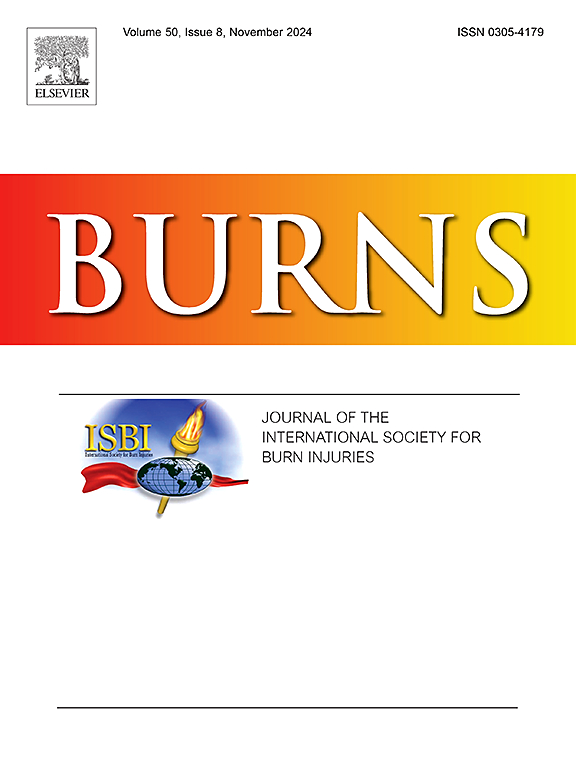Epidemiology and timing of infectious complications from battlefield-related burn injuries
IF 3.2
3区 医学
Q2 CRITICAL CARE MEDICINE
引用次数: 0
Abstract
Background
Infections are the most frequent complication and cause of mortality in burn patients. We describe the epidemiology and outcomes of infections among deployed U.S. military personnel with burns.
Methods
Military personnel who sustained a burn injury in Iraq or Afghanistan (2009–2014) and were admitted to the Burn Center at U.S. Army Institute of Surgical Research at Brooke Army Medical Center were included in the analysis.
Results
The study population included 144 patients who were primarily young (median 24 years) males (99 %) with combat-related burns (62 %) sustained via a blast (57 %), resulting in a median total body surface area burned (TBSA) of 6 % (IQR 3–14 %). Twenty-six (18 %) patients developed infections, with pneumonia being the predominant initial infection (= 16), followed by skin and soft-tissue infections (SSTI, = 6), bloodstream infections (BSI, = 3), and intra-abdominal infections (IAI, = 1). Initial infections were diagnosed at a median of 4 days (IQR 3–5) post-injury for pneumonia, 7 days (IQR 4–12) for SSTIs, 7 days (IQR 6–7) for BSI, and 17 days for IAI. Patients with infections were more severely injured with greater TBSA (median 31 % vs 5 %), more inhalation injury (38 % vs 12 %), and longer time to definitive surgical management (median of 34 days vs 9) compared to those who did not develop infections (p < 0.001). Among patients with inhalation injury, a higher proportion developed pneumonia (42 %) compared to those without inhalation injury (5 %; p < 0.001). Five patients developed an invasive fungal infection. Gram-negative bacilli were most frequently recovered, with 32 % of Gram-negative isolates being multidrug-resistant. Four patients died, of whom all had ≥ 4 infections.
Conclusions
Military personnel with burn injuries who developed infections were more severely injured with greater TBSA and inhalation injury. Improved understanding of risk factors for burn-related infections in combat casualties is critical for effective management.
战场烧伤感染性并发症的流行病学和发生时间
本文章由计算机程序翻译,如有差异,请以英文原文为准。
求助全文
约1分钟内获得全文
求助全文
来源期刊

Burns
医学-皮肤病学
CiteScore
4.50
自引率
18.50%
发文量
304
审稿时长
72 days
期刊介绍:
Burns aims to foster the exchange of information among all engaged in preventing and treating the effects of burns. The journal focuses on clinical, scientific and social aspects of these injuries and covers the prevention of the injury, the epidemiology of such injuries and all aspects of treatment including development of new techniques and technologies and verification of existing ones. Regular features include clinical and scientific papers, state of the art reviews and descriptions of burn-care in practice.
Topics covered by Burns include: the effects of smoke on man and animals, their tissues and cells; the responses to and treatment of patients and animals with chemical injuries to the skin; the biological and clinical effects of cold injuries; surgical techniques which are, or may be relevant to the treatment of burned patients during the acute or reconstructive phase following injury; well controlled laboratory studies of the effectiveness of anti-microbial agents on infection and new materials on scarring and healing; inflammatory responses to injury, effectiveness of related agents and other compounds used to modify the physiological and cellular responses to the injury; experimental studies of burns and the outcome of burn wound healing; regenerative medicine concerning the skin.
 求助内容:
求助内容: 应助结果提醒方式:
应助结果提醒方式:


